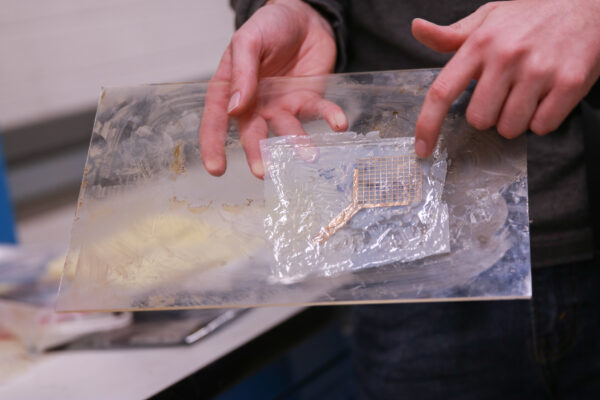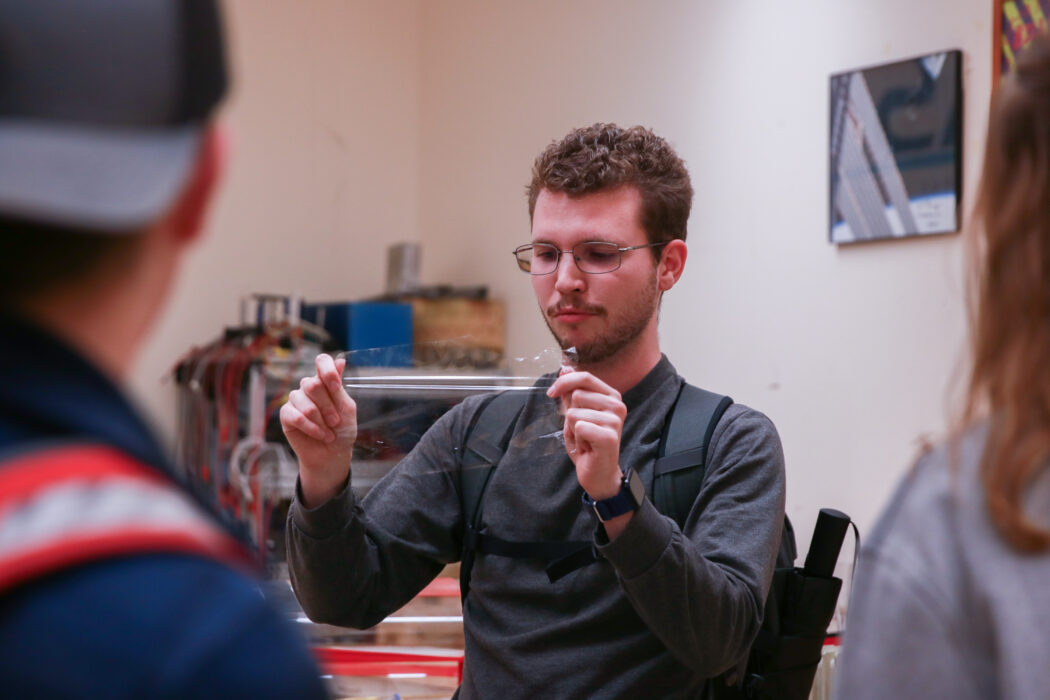GAS team sends piece of Logan to space
The Get Away Special Satellite Team is an entirely student-run club producing satellites that are launched into space. GAS is currently ramping up for another year of work on the next big mission: the Get Away Special Radio and Antenna Transparency Satellite, or GASRATS.
Students with GAS spend each year designing, constructing and testing a CubeSat, a miniature satellite often launched alongside the much bigger satellites that NASA and other space programs produce.
Members of GAS are split into seven different teams, each with a specialized focus to ensure the success of the satellite both on the ground and in space.
Third year mechanical engineering student Tyler Day is the lead payload engineer for the payloads team, which works exclusively on the transparent patch antenna and the camera deployment system for the satellite.
“A payload is just the thing you want to test out, or is the kind of data and science you want to do,” Day said. “What I do is a lot of research on the antenna its manufacturing process, its properties and just overseeing all the things related to the antenna and the camera deployment system.”
The antenna itself is an integral part of the satellite and its function as a vessel for research.
“The antenna transmits things from the satellite such as data, images or any other sorts of data that we have on the satellite back to the ground,” Day said. “You’re constantly trying to communicate with the satellite to know where it’s at, what its state is and what it’s doing.”
Once these satellites are sent into space, they collect vast amounts of data critical to aerospace research they provide students with hands-on engineering experience and a chance to explore what scientists at NASA do everyday.

Day talks about the plastic film the space antenna gets printed on. Photo Taken by Claire Ott
These satellites are no simple feat, and they are often long-term projects.
“Our last satellite took 10 years to develop,” Day said. “We’re hoping to cut that in half. Currently we’re on schedule to launch in late 2025 and then deploy from the International Space Station in 2026.”
The last satellite was the Get Away Special Passive Attitude Control Satellite, otherwise known as GASPACS, which was deployed on Jan. 26 of last year and ran a 117 day mission.
GASPACS was extremely successful and was recognized as the world’s first CubeSat built entirely by undergraduates.
CJ Wayland is a senior studying mechanical engineering and is currently the team lead for missions operations at GAS.
“I’m mostly in charge of our ground systems, licensing and operations once GASRATS is in space,” Wayland said. “Right now, I’m maintaining the ground station that we currently have on campus.”
It takes a variety of people of different talents to pull a satellite together and ensure its safe passage into space. Students of GAS take pride in having all their hard work make it to the stars.
“I love knowing that what I work on and what the rest of the team works on is going to be in space,” Day said. “Generally, for the aerospace industry, you’re working on this kind of stuff in grad school or during your Ph.D. But here as an undergrad, you get the opportunity of doing that real world space engineering.”
GAS found its roots in 1976 when NASA first began accepting small experiments from universities aboard the Space Shuttle. USU saw its first payload launched into space in 1982 and has been developing new projects with new research goals ever since.
“I really like that we’re a part of history,” Wayland said. “GAS team has been around for a while, so being a part of something that’s been involved with the space shuttle program and space in general is really cool.”
The GAS team welcomes students of all majors and backgrounds each year to get a taste of aerospace engineering.

